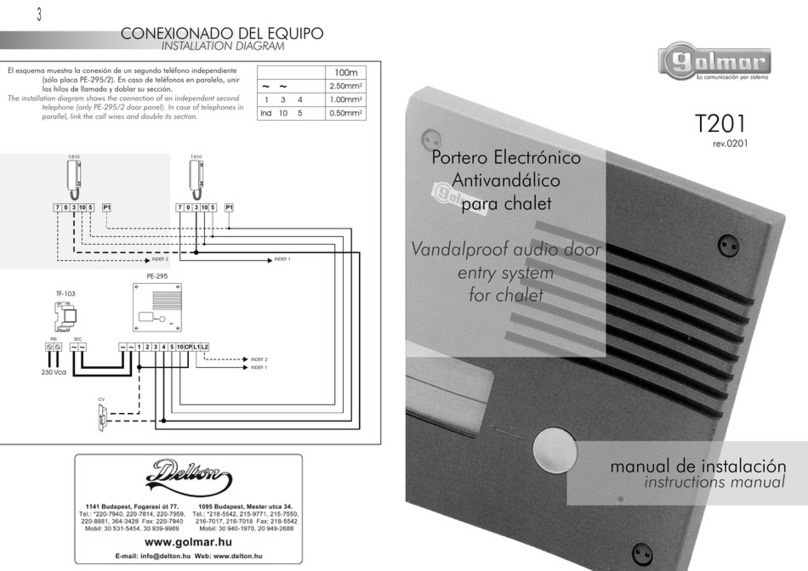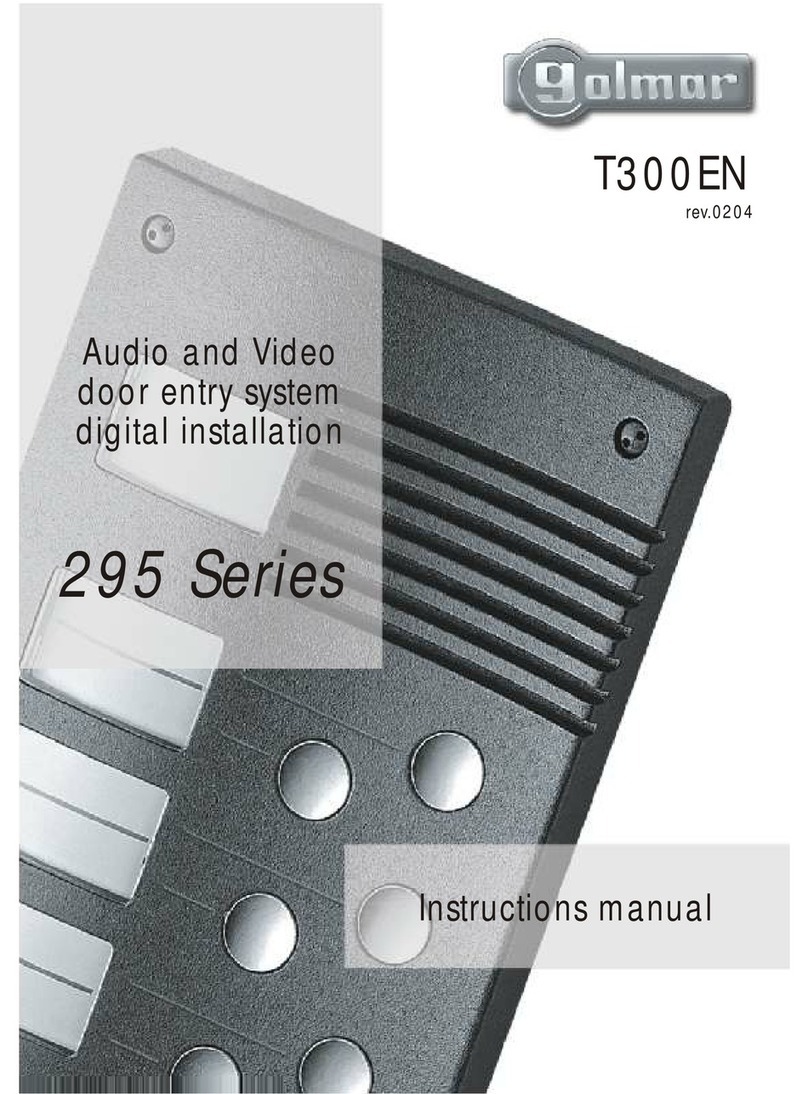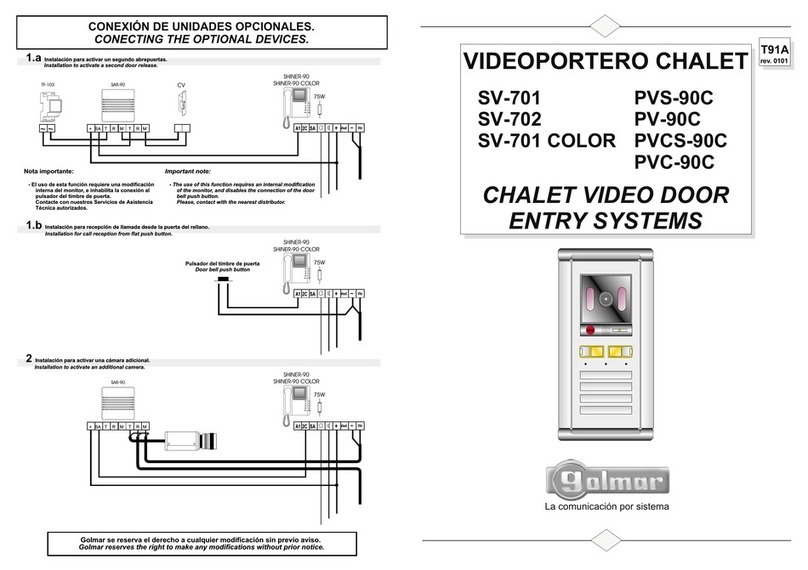
DOOR PANEL INSTALLATIONINSTALACIÓN DE LA PLACA
1. Unir mediante un cable el borne ‘-’ del circuito del teclado y uno de los
bornes de la caja de empotrar, mediante un conector tipo ‘faston’ macho.
2. Atornillar un cable corto al borne ‘TP’ del circuito del teclado, terminando
el cable con un conector tipo ‘faston’ hembra.
3. Cerrar el circuito uniendo los terminales,’faston’.
4. Conectar el dispositivo anti-hurto a los bornes del relé libre de contacto
‘A1’ y ‘A2’ del circuito del teclado.
5. Colocar el interruptor número 4 del circuito del teclado en la posición OFF.
6. Cerrar cuidadosamente la placa, tal y como se describe en el apartado 13.
7. Para abrir la placa con el dispositivo conectado, hacerlo cuidadosamente
para no desconectar el cable; colocar el interruptor 4 en la posición ON,
y desconectar el cable. Repetir desde el paso 1 para volver a cerrar la placa.
1. Connect a wire between the ‘-’ terminal of the keypad pcb and one of the
flush fitting box terminals, by using a male ‘faston’ connector.
2. Screw a short wire to ‘TP’ terminal of the keypad pcb, and finish the wire
with a female ‘faston’ connector.
3. Short the circuit connecting the two ‘faston’ connectors.
4. Connect the anti-burglary device between ‘A1’ and ‘A2’ terminals of the
keypad pcb (free contacts relay).
5. Set switch number 4 to OFF position.
6. Attach the door panel as described on point 13.
7. To open the door panel with the device connected, open it carefully to avoid
wire disconnection; set switch 4 to ON position and disconnect the wire.
Repeat from step 1 to close the door panel again.
9Conexión a un dispositivo anti-hurto (sólo módulos de mando con control de accesos).
Connection to an anti-burglary device (only main modules with access control).
2
3
1
1
10 Instalación de la resistencia calefactora (sólo cámara b/n).
Heater resistor installation (only b/w camera).
+24V
1. Retirar los cuatro tornillos que inmovilizan la carcasa de la
telecámara.
2. Introducir los pins, suministrados en el kit, en los taladros
dispuestos en el circuito y soldarlos. Insertar la resistencia
calefactora en los pins, con el cable de alimentación en el
lado marcado ‘+’.
3. Pasar el cable de alimentación de la resistencia calefactora
por el orificio de la carcasa, y conectarlo al borne ‘+’ del
circuito CVO. Finalmente, cerrar la carcasa.
Remove the four screws that fix the camera case.
Introduce the pins, supplied with the kit, into the holes fitted
on the PCB and solder them. Insert the heater resistor into
the pins, with the power wire by the side with ‘+’ impressed.
Cable the power wire of the heater resistor through the hole
of the case, and connect it to the ‘+’ terminal of the CVO
circuit. Finally, close the case.
Nota: Instalar sólo en lugares muy húmedos y frios.
Note: To be installed only in cold and wet places.






























